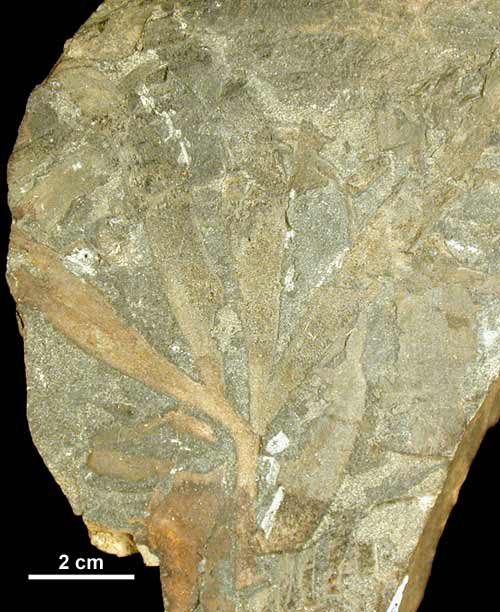UCMP MYSTERY FOSSIL #49 is . . .
Ginkgoites
 |
Ginkgoites is an old relative of the modern Ginkgo. Ginkgoes first appear in the fossil record in the Lower Jurassic Period, about 190 million years ago. They reached their greatest diversity during the Cretaceous, but showed a decline during the Tertiary. There are no Ginkgo fossils known from Pleistocene rocks, and for this reason, they were thought to be long extinct. However, specimens were discovered in the mountains of China and were cultivated. Ginkgoes were reintroduced into North America in the 1700s after a seven-million-year absence. This specimen of Ginkgoites is from the Late Jurassic-aged Monte de Oro Formation of Butte County, California. To learn more about Ginkgoes, look here. |